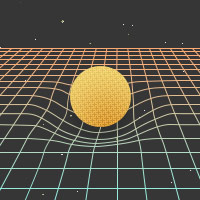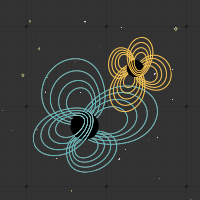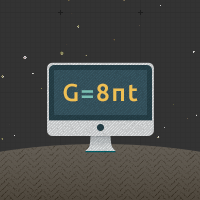N
N
Neutrino
A type of particle which has no charge and an extremely small mass. It is a Fermion, and is extremely difficult to stop or to detect. Nonetheless, they are produced in large numbers. The Sun, for example, sends 30 million neutrinos through every square inch of the Earth every single second. They are so hard to stop, however, that if a neutrino were sent through a solid light year of lead, it would still have a 50:50 chance of flying right through without stopping.
Neutron
One of the particles in an atomic nucleus. These particles have no electric charge, but they hold together the protons (positive particles in a nucleus), and account for roughly half of the particles in the nucleus. Neutrons are fermions, and are believed to form the majority of the matter in a neutron star.
Neutron Star
A type of star which is very old, having cooled off and stopped nuclear fusion reactions. When gravity pulls the star down on itself, the electrons and protons are squeezed together, leaving just neutrons. The star is then supported against gravity by "neutron degeneracy pressure" (no two neutrons can be in the same place at the same time). These are produced when a star is too heavy to be a white dwarf, but not heavy enough to turn into a Black Hole.
Newton's First Law of Motion
The first of Newton's Laws of Motion, which says that moving objects move in a straight line. Specifically, the Law says, "An object at rest tends to stay at rest and an object in motion tends to stay in motion with the same speed and in the same direction unless acted upon by an unbalanced force."
Nuclear Fission
A physical process which takes a nucleus of a heavy element (like Uranium or Plutonium, for example) and breaks them down into two or more smaller nuclei. This process releases large amounts of energy. It is sometimes called "Splitting the Atom". This is used in many modern power plants to generate electricity by heating water with the energy released. The two or more smaller nuclei which are produced are frequently toxic, and nearly always radioactive, which makes this method of producing electricity controversial. Fission is also the method used in simple nuclear weapons.
Nuclear Fusion
A physical process which takes light elements and combines them into a heavier element. An example is the fusion of two Hydrogen atoms to form a Helium atom. This is the process which gives stars (including our Sun) heat and energy so that they shine. Though fusion is not yet used to produce electricity, scientists are working on this method, which will provide a nearly-inexhaustible source of cheap electrical energy, with little of the pollution or danger of nuclear fission. Fusion is also the force behind some very powerful nuclear weapons — the "H-Bomb".
Nucleus
The central part of an atom, which contains Neutrons and Protons. Electrons are usually found around the Nucleus. Strictly speaking, this is the only part of an atom involved in Nuclear Reactions (Fission or Fusion).
Numerical Relativity
The branch of Relativity research which deals with simulating the development of Spacetime, using computers. This is believed to be the only possible way to understand things like the merger of two Black Holes.




